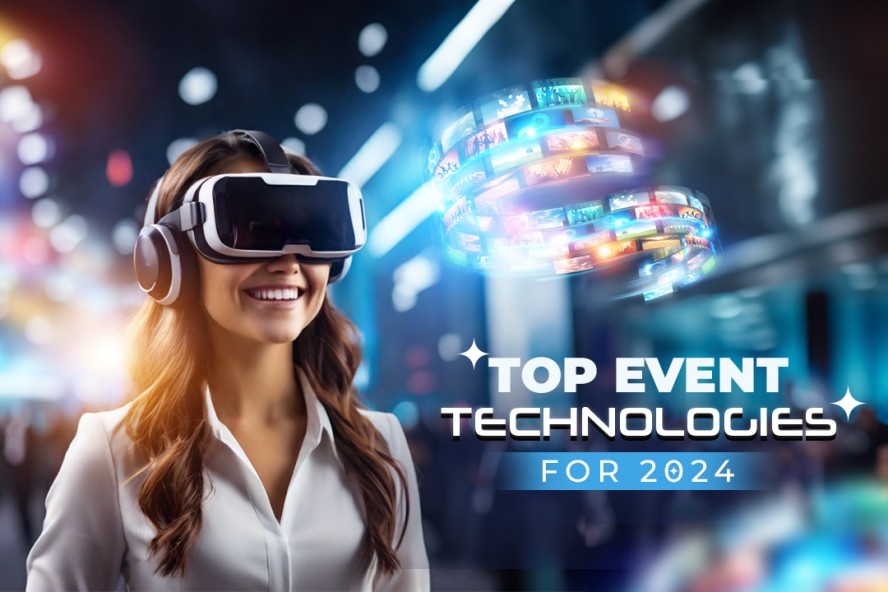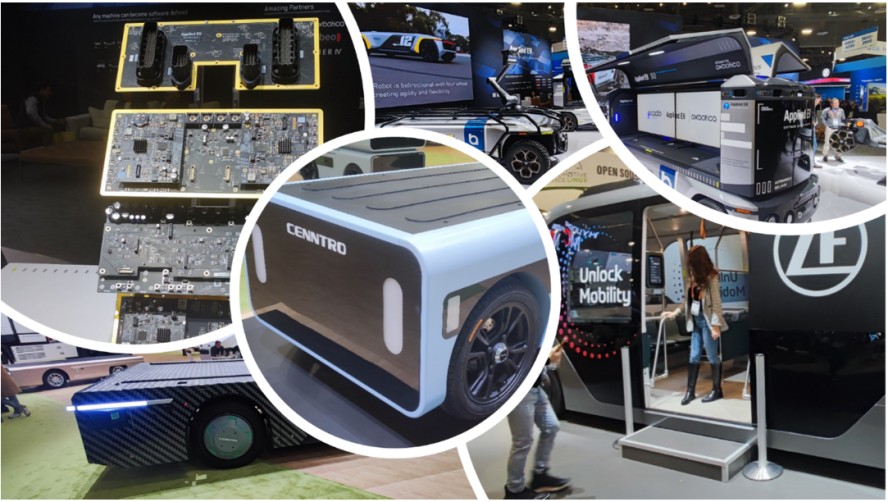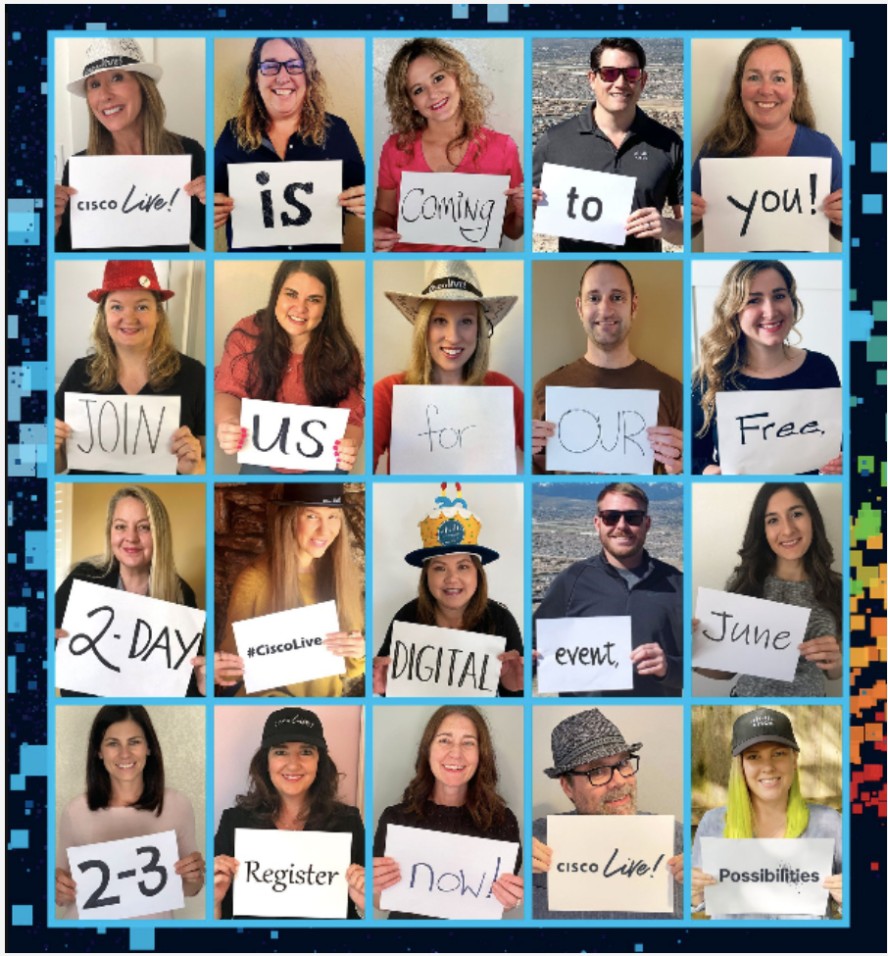
In a world where connectivity and innovation rule, technology has become the heartbeat of every successful event. It’s the secret sauce that elevates engagement, fosters connectivity, and leaves a lasting impression on attendees.
In this article, we’ll explore why technology is a big deal for events and nine game-changing event technologies set to shine in the coming year. These innovations are the driving force behind a new era of immersive and dynamic event experiences.
So, prepare for a journey where tech takes the lead in making events seriously awesome!
What is Event Technology?
Event technology involves using digital tools, software, and innovations to enhance event planning, execution, and experience. This includes applications like virtual reality, mobile apps, and engagement tools, which aim to make events more engaging, efficient, and memorable for organizers and attendees. The goal is to leverage technology for improved communication, increased interactivity, and a seamless event experience.
Importance of Event Technologies
According to a journal published in IEEE Xplore, a library of the world’s highest quality technical literature in engineering and technology, innovative event technologies help organize events easily and with splendor. Here are the following reasons why event technologies hold significant importance in 2024:
- Enhanced Engagement and Interaction: Incorporating event technologies such as virtual reality and mobile apps (interactive maps, personalized schedules, live polling during sessions, and networking features) keeps attendees actively involved. For example, Companies like Volvo use VR to let attendees take virtual test drives of their latest vehicles, offering an engaging and immersive experience.
- Efficient Planning and Organization: Event management software streamlines tasks such as scheduling, registration, and communication, making the planning process more efficient and reducing the likelihood of errors.
- Data-Driven Insights: Event technologies provide valuable data and analytics, offering insights into attendee behavior, preferences, and overall event performance. This data is instrumental in making informed decisions and improving future events.
- Global Reach and Inclusivity: Virtual and hybrid event solutions break down geographical barriers, enabling a broader audience to participate. This expands the reach and promotes inclusivity by accommodating attendees from various locations.
- Cost-Effective Solutions: Effective use of event technology can result in cost savings by reducing paperwork, optimizing resource allocation, and enhancing overall operational efficiency, contributing to the financial success of events.
9 Top Trends of Event Technologies This Year
We’ll be going through the top 9 event technologies transforming the experience for attendees, organizers, planners, speakers, and sponsors in 2024-
1. Live Translation
Live translation is a technology trend involving real-time spoken language interpretation during events. Utilizing tools such as artificial intelligence and cloud-based solutions, it enables seamless communication by instantly translating spoken words from one language to another.
Benefits for Event Planners and Event Venues:
Here’s why incorporating this technology trend is helpful in 2024-
- Global Reach: Live translation facilitates engagement with a diverse, global audience, expanding the reach of events.
- Enhanced Attendee Experience: Customizable translation options provide a personalized experience, allowing participants to understand content in their preferred language.
- Inclusivity: Features like live captioning and sign language interpretation ensure events are accessible to attendees with diverse language proficiencies and accessibility needs.
- Efficient Communication: Integration with virtual platforms and cloud-based solutions streamlines communication processes, aiding event coordination and execution.
The Web Summit is a real-life example of a B2B conference where live translation is utilized. Web Summit is an annual technology conference that attracts a global audience of entrepreneurs, investors, and professionals. Given its international scope, the conference incorporates live translation services to bridge language gaps among participants. During keynote presentations, panel discussions, and workshops, live translation enables speakers to communicate in their native languages while ensuring attendees can understand the content in real time through translated channels.
2. AI Chatbots
AI chatbots are computer programs using artificial intelligence to engage in human-like conversations. They leverage natural language processing to understand user queries, provide relevant responses, and perform various tasks, enhancing customer support and interaction on websites, messaging platforms, and mobile apps.
Benefits for Event Planners and Event Venues:
Here’s why incorporating this technology trend is useful in 2024-
- Instant Information: Chatbots can instantly provide event details, schedules, and venue information, improving attendee experience and reducing information-related queries.
- Registration Assistance: They guide attendees through registration, ensuring a smooth and efficient check-in experience.
- FAQs and Guidance: Chatbots handle frequently asked questions, offering immediate answers and guidance and freeing event staff for more complex tasks.
- Personalized Recommendations: AI chatbots can provide personalized event recommendations, helping attendees navigate and participate in relevant sessions or activities.
The Consumer Electronics Show (CES), a prominent B2B conference, uses AI chatbots to assist attendees. These chatbots offer information about exhibitors’ event schedules and guide participants to relevant booths and sessions.

They streamline the attendee experience by providing instant responses and personalized recommendations, showcasing the practical application of AI chatbots in large-scale B2B conferences.
3. AR/VR Experiences
Augmented Reality (AR) and Virtual Reality (VR) experiences involve the integration of digital elements into the real world (AR) or the creation of immersive, simulated environments (VR).

These event technologies enhance sensory perceptions, providing interactive and engaging experiences for users.
Benefits for Event Planners and Event Venues:
Here’s why incorporating this technology trend is useful in 2024-
- Enhanced Engagement: AR/VR experiences captivate attendees by offering interactive and immersive content, making events more memorable and engaging.
- Virtual Venue Tours: Event planners can use VR to provide virtual venue tours, allowing attendees to explore event spaces remotely and plan their visits effectively.
- Product Demonstrations: AR can be utilized for on-site product demonstrations, allowing attendees to experience products in a virtual space or overlaying digital information onto physical products.
- Interactive Booths and Displays: Event venues can incorporate AR/VR to create interactive booths and displays, attracting attention and facilitating meaningful interactions between attendees and exhibitors.
The Mobile World Congress (MWC), a major B2B conference for the mobile technology industry, has embraced AR/VR experiences. In 2023, exhibitors used AR to showcase virtual prototypes of upcoming devices, allowing attendees to explore and interact with products that had not yet been physically manufactured. This generated excitement and demonstrated the practical application of AR in providing innovative product experiences at large-scale B2B events.
4. Holograms
Holograms are three-dimensional visual representations created by the interference of light beams, producing lifelike, interactive images that appear to float in space. This technology creates immersive and realistic visual experiences.
Benefits for Event Planners and Event Venues:
Here’s why incorporating this technology trend is useful in 2024-
- Keynote Presentations: Event planners can use holograms to bring remote speakers or performers to the stage, offering a visually striking and impactful element to keynote presentations.
- Virtual Attendance: Holographic technology enables remote participants to appear in real-time as holograms, providing a sense of presence for virtual attendees during hybrid events.
- Product Launches: Event venues can leverage holograms for product launches, allowing physical products or prototypes to be showcased in a dynamic and attention-grabbing manner.
- Interactive Exhibits: Holographic displays create interactive exhibits, attracting and engaging attendees by allowing them to interact with holographic content.
- Brand Promotion: Holograms enhance brand visibility by creating memorable and unique visual experiences, leaving a lasting impression on event attendees.
Microsoft Ignite, a technology conference, has utilized holographic technology for keynote presentations in 2021. Microsoft Mesh mixed reality headset has been employed to showcase holographic content, enabling speakers to interact with virtual elements on stage and providing an immersive experience for both physical and virtual attendees. This application of holograms adds a futuristic and dynamic dimension to the conference’s content delivery.
5. Digital Photo Booths
Digital photo booths are modern, technology-infused versions of traditional photo booths, featuring digital interfaces, customizable backgrounds, and social media integration. They offer a fun and interactive way for event attendees to capture and share moments.
Benefits for Event Planners and Event Venues:
Here’s why incorporating this technology trend is useful in 2024-
- Enhanced Engagement: Digital photo booths provide a lively and interactive element, encouraging attendees to participate and engage with the event.
- Branding Opportunities: Event planners can customize digital photo booth experiences with branded backgrounds, overlays, and digital props, creating a memorable and shareable brand experience.
- Social Media Exposure: Integrated social sharing options enable attendees to instantly share their photos on social media, promoting the event and increasing its online visibility.
- Data Collection: Event venues can use digital photo booths to collect valuable attendee data through opt-ins, surveys, or contests, contributing to post-event analytics and marketing efforts.
- Event Souvenirs: Attendees receive instant, shareable digital or print photos as event souvenirs, serving as lasting reminders and contributing to the overall positive event experience.
At the Adobe Summit 2023, a B2B conference for digital marketing professionals, digital photo booths were integrated into the event’s experiential marketing strategy. Attendees could create personalized GIFs, add branded elements to their photos, and share these on social media, enhancing the event’s online presence and creating a memorable, interactive experience for participants.
6. Live Streaming
Live streaming involves broadcasting real-time video content over the internet, allowing audiences to watch events, presentations, or activities as they happen. It enables immediate access and interaction from virtually anywhere with an internet connection.
Benefits for Event Planners and Event Venues:
Here’s why incorporating this technology trend is useful in 2024-
- Global Reach: Live streaming extends event reach to a global audience, breaking geographical barriers and enabling participation from diverse locations.
- Audience Engagement: Event planners can interact with virtual attendees in real time through chat features, polls, and Q&A sessions, enhancing engagement and inclusivity.
- Cost-Effective: Live streaming reduces the need for physical venue capacity, lowering costs associated with venue logistics, catering, and accommodation.
- Content Accessibility: Attendees can access event content on-demand after the live stream, providing flexibility for those in different time zones or with scheduling conflicts.
The Salesforce Dreamforce conference regularly incorporates live streaming. This B2B event is focused on cloud computing and CRM solutions.

It utilizes live streaming to broadcast keynotes, sessions, and interviews to a global audience. Virtual attendees can engage with the content, participate in discussions, and access recorded sessions, showcasing how live streaming enhances the conference’s impact and accessibility.
7. Digital Invitations
Digital invitations replace traditional paper invitations with electronic alternatives, often sent via email or through dedicated event platforms. They provide a more efficient, eco-friendly, and customizable way to invite and manage event attendees.
Benefits for Event Planners and Event Venues:
Here’s why incorporating this technology trend is useful in 2024-
- Cost Savings: Digital invitations eliminate printing and postage costs, making them a more budget-friendly option for event planners and venues.
- Instant Delivery: Invitations are delivered instantly, enabling quick dissemination of event details and updates to attendees.
- Customization Options: Event planners can personalize digital invitations with interactive elements, multimedia content, and dynamic RSVP features, enhancing the overall user experience.
- Real-time Tracking: Digital invitations offer real-time tracking of RSVPs and engagement metrics, providing valuable insights for planning and logistics.
- Environmentally Friendly: The shift to digital invitations aligns with sustainability goals, reducing paper waste and the environmental impact of traditional printed invitations.
The IBM Think conference is an example of a B2B event that has embraced digital invitations since 2022. Attendees receive personalized digital invitations with interactive features, allowing them to easily RSVP, access event details, and receive updates electronically. These features include personalized agenda planning, real-time session updates, and interactive event venue navigation maps. This approach streamlines the registration process and aligns with the tech-centric theme of the conference.
8. Gamification
Gamification involves integrating game-like elements, such as points, rewards, and challenges, into non-game contexts to enhance engagement and participation. In the context of events, it turns attendee experiences into interactive and competitive activities.
Benefits for Event Planners and Event Venues:
Here’s why incorporating this technology trend is useful in 2024-
- Increased Engagement: Gamification motivates attendees to participate in event activities, boosting overall engagement levels.
- Networking Opportunities: Games encourage interaction among attendees, fostering networking opportunities and creating a more dynamic event atmosphere.
- Data Collection: Event planners can collect valuable data on attendee behavior, preferences, and interactions through gamified elements, aiding in post-event analysis.
- Brand Visibility: Event venues can increase brand visibility by incorporating gamification. This would make the event more memorable for attendees and sponsors.
- Enhanced Learning: Gamified elements within educational sessions or workshops make learning more enjoyable and effective, contributing to a positive attendee experience.
The Cisco Live conference integrates gamification to enhance attendee engagement.

Attendees earn points and rewards by participating in activities, attending sessions, and networking. This not only incentivizes participation but also transforms the conference into an interactive and competitive experience, showcasing the effectiveness of gamification in the B2B event space.
9. QR Codes
QR codes (Quick Response codes) are two-dimensional barcodes that store information and can be scanned using a smartphone or dedicated QR code reader. They provide a quick and convenient way to access digital content, websites, or information by simply scanning the code.
Benefits for Event Planners and Event Venues:
Here’s why incorporating this technology trend is useful in 2024-
- Contactless Check-ins: QR codes streamline event entry by enabling attendees to check in using their smartphones, reducing physical contact and improving efficiency.
- Information Access: Attendees can quickly access event details, schedules, and maps by scanning QR codes, enhancing the overall event experience.
- Networking: QR codes on attendee badges facilitate seamless networking as participants can exchange contact information by scanning each other’s codes.
- Feedback and Surveys: Event planners can use QR codes to gather real-time feedback by directing attendees to digital surveys, aiding in post-event evaluations.
- Promotional Material: QR codes on promotional materials link directly to additional content, websites, or product information, providing a convenient way for attendees to explore further.
QR codes are extensively used at the CES (Consumer Electronics Show), one of the largest B2B conferences. Attendees can scan QR codes to access detailed information about showcased products, exhibitors, and conference sessions, allowing for a seamless and interactive experience. This demonstrates the practical application of QR codes in enhancing engagement and information accessibility at large-scale B2B events.
Tips for Getting the Best from Event Technologies
To make the most of event technologies and ensure a seamless and successful event, consider the following tips:
- Align your Event Technologies with Goals
Clearly define your event objectives and choose technology that directly supports these goals, whether it’s enhancing engagement, streamlining processes, or gathering data insights.
- Thorough Testing Beforehand
Conduct comprehensive testing of all event technology components before the event to identify and address potential issues, ensuring a smooth experience for both organizers and attendees.
- Provide Adequate Training
Train your team and event staff to use the selected technology effectively. This will reduce the likelihood of technical glitches and ensure everyone is comfortable navigating the tools.
- Facilitate Connectivity
Ensure a reliable internet connection, particularly for virtual and hybrid events. Have backup options to mitigate connectivity issues and provide a seamless experience.
- Encourage Attendee Engagement
Leverage interactive features of event technologies to enhance attendee engagement. Incorporate tools like live polls, Q&A sessions, and networking opportunities for a dynamic event experience.
- Collect and Analyze Data
Use integrated data analytics tools to gather insights into attendee behavior, preferences, and overall event performance. This information is valuable for refining future events and improving the overall experience.
- Provide Tech Support
Have a dedicated tech support team available during the event to address any technical issues promptly. This ensures a positive experience for both organizers and attendees.
Top sites for Event Technology reviews
Here are some platforms where you can find valuable reviews:
- Capterra
Website: Capterra – Event Management Software
Capterra offers reviews and user ratings for various event management software, helping you make informed decisions based on user experiences.
- G2 Crowd
Website: G2 – Event Management Software
G2 Crowd provides user reviews and ratings for event management software, offering insights into the strengths and weaknesses of different solutions.
- TechRadar
Website: TechRadar
TechRadar covers a broad range of technology reviews. Check their event tech-related articles for insights and recommendations.
- Event Manager Blog
Website: Event Manager Blog
Event Manager Blog often features reviews, insights, and articles related to event technologies, offering a valuable resource for event professionals.
- CIO Review
Website: CIO Review – Event Management
CIO Review provides insights into event management technologies, often featuring reviews and analyses of the latest trends in the industry.
- Event Tech Brief
Website: Event Tech Brief
Event Tech Brief offers reviews and insights into various event technology solutions, providing a comprehensive source for staying updated on the latest tools.
Key Takeaway
In the dynamic world of 2024 events, technology is the star player. It’s a shift toward inclusivity and engagement. As we peek into the future, these tech trends are set to redefine how we connect and make events unforgettable.
For event planners, it’s the chance to craft immersive and impactful experiences that resonate. The stage is set for a new era in event technologies, where innovation takes center stage and sets the tone for a remarkable and connected future. If you want to stay abreast with all the latest information about the event industry, visit our site—Eventible.




Comments are closed.